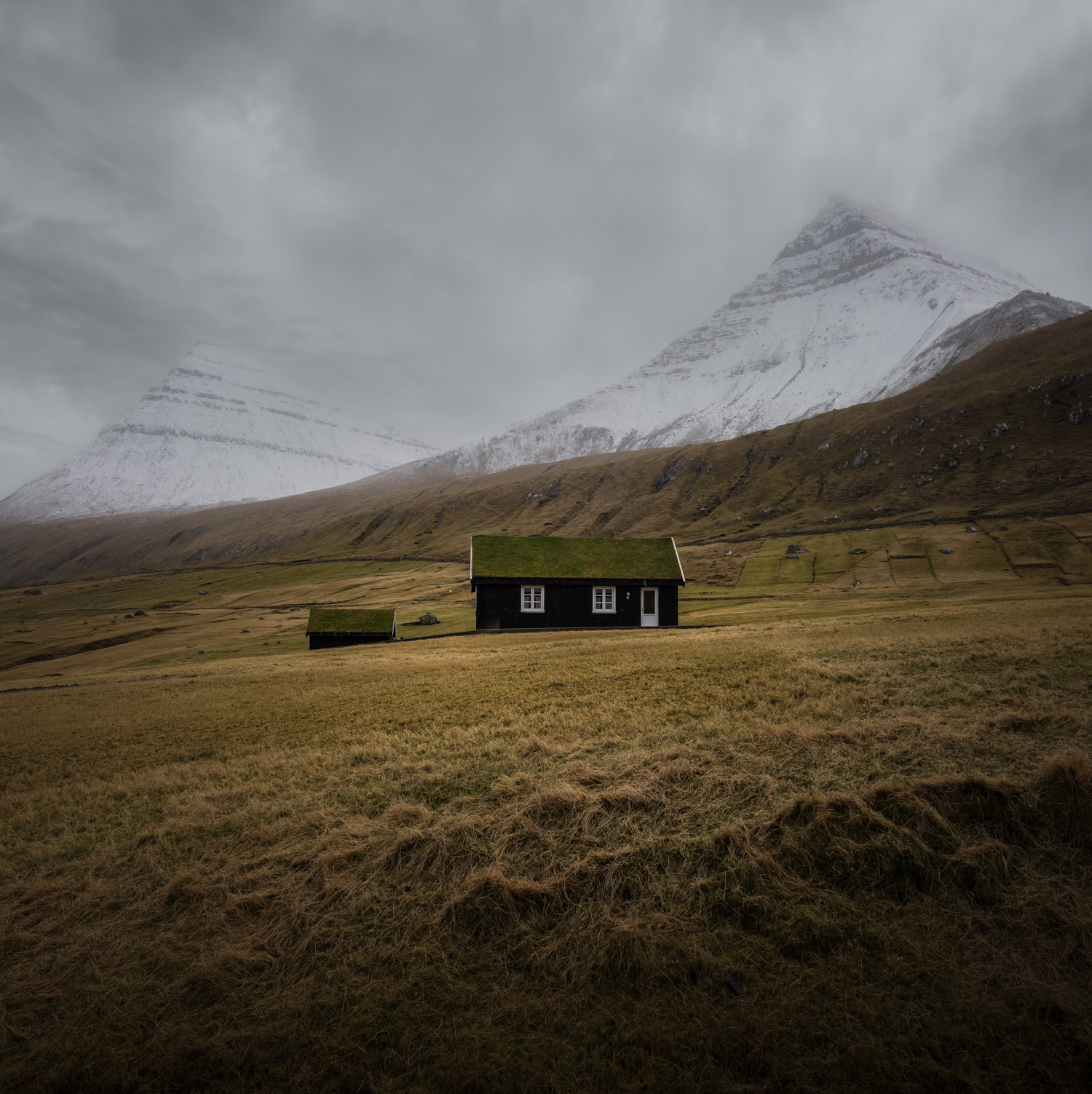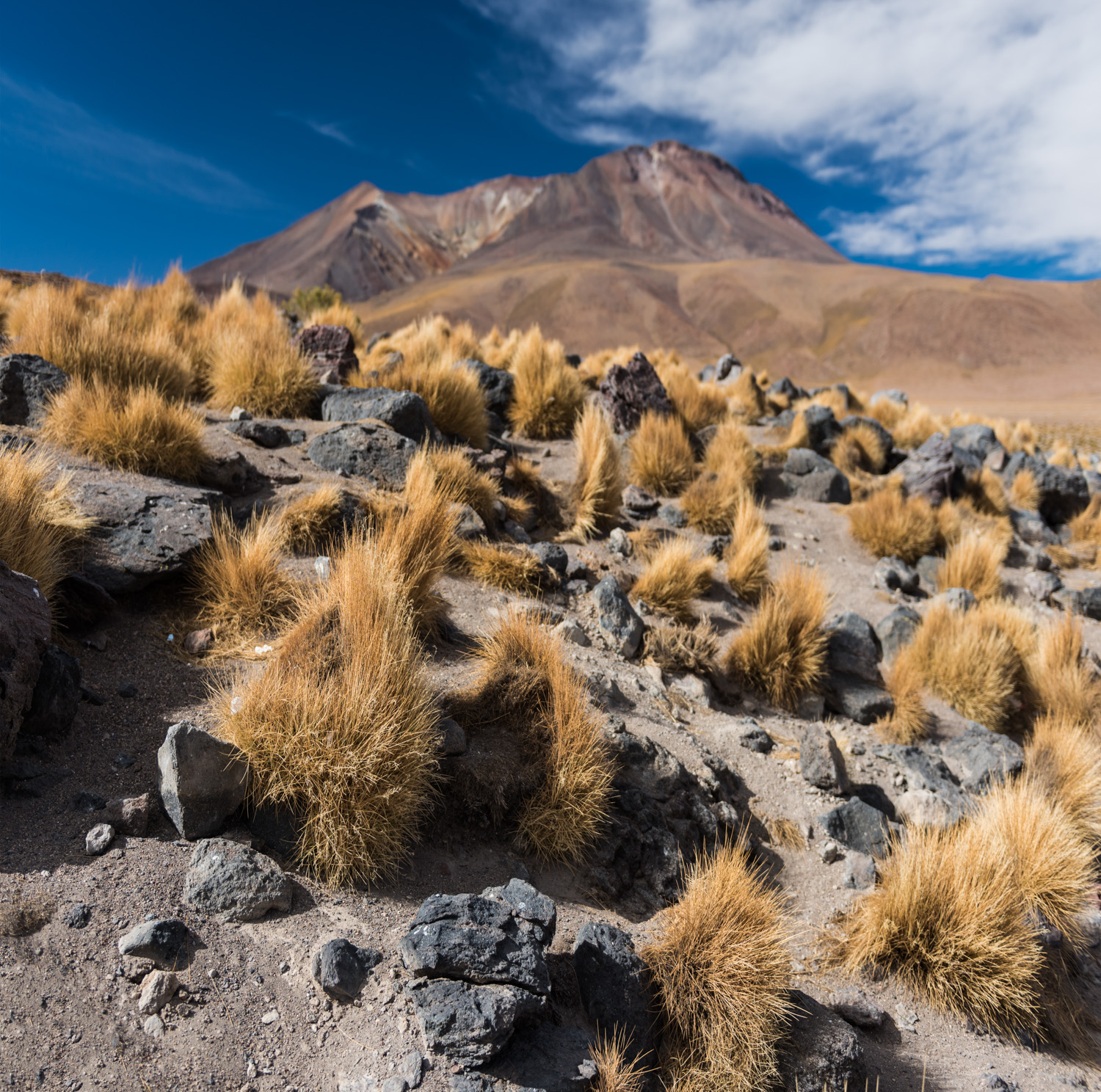The Faroe Islands is a place not many have heard of. An autonomous country within the Kingdom of Denmark, the Faroe Islands are located approximately 300km north of Scotland, and halfway between Denmark and Iceland. Its a land of contrasts - modern subsea tunnel infrastructure and helicopter services connecting remote farming villages with more sheep than people.
Although its a sub-arctic island, its location in the Gulf Stream keeps temperatures above freezing year-round. Which means there isn't really a bad time of year to visit - we went in mid-April of this year (2017) and got rain, wind, sunshine and snow.
Overview of the Faroe Islands
The Faroe Islands is a group of 18 islands, with only one major island (Litla Dimun) uninhabited. We spent most of our time on Vagar, Streymoy, Eysturoy and Suduroy. I'll focus on a dozen or so key photo spots that I visited over my week on the islands.
You'll fly into Vagar airport, on the island of Vagar, and we chose to spend a couple of nights here in an AirBnB in Midvagur (down near the docks).
Faroe Islands Key Photo Locations
If anyone is familiar with the islands, you'll know that I missed several locations (notably Kalsoy). There were days when the weather just didn't play ball and I couldn't get to where I wanted to go - such is life on a trip to the Faroe Islands.
1. Gasadalur and Mulafossur
The classic Faroe Islands photography location. If you've seen a picture of the Faroe Islands, its probably this spot you've seen. Until 2004 this location (and the village located here) did not have a road connection to the rest of Vagar. Neither could it be accessed by boat for most of the year, so the only way to get here was to hike over a 400m high mountain pass.
Location - very easy spot to get to.
As you'll see above, this location is very easy to get to. There is only one road in and out, so take the 45 out from Sorvagur. You'll pass Bour on your way, which is a great little village with awesome views over to Tindholmur. Continue through the tunnel, and down towards Gasadalur (watch the road in, its steep and slippery when its wet). The best spot to park is marked on the map - there is a little pull-out parking area near a fence that fits two or three cars maximum (watch out for the little sheepdog that likes to play fetch with stones). If this little area is full then you can continue into the main village and park there, and wander back down the road.
Composition wise there aren't too many options - the waterfall (Mulafossur) is so iconic and you can really only shoot from one or two spots. The best spot (or near to it) is marked on the map above (and its from where the shot below was taken).
Gasadalur from the classic view point, after a dusting of snow.
You also get a great view over the island of Mykines.
In addition to these shots, you can also climb down a set of rocky stairs to the shoreline (the area circled in red in the map above). On the few times we visited this spot the winds were blowing hard, it was raining or had just finished snowing so we never felt confident enough to get down and up those stairs in one piece.
2. Bour
Easy to fold into your road trip to Gasadalur. The village of Bour is small and quaint, and has a couple of the classic turf-roofed houses. The village is located between Sorvagur and Gasadalur, a short turn-off from the main 45 road. Watch out for the sheep who roam the roads here as if they own them.
The village of Bour.
As well as the huts and houses themselves, there are great views out across the water to the rocky Tindholmur. You'll also come across a few viewpoints with small parking areas on the road between Gasadalur and Sorvagur, so pull over and have a look.
The view across to Tindholmur.
3. Leitisvatn
You'll see this place noted as either Sorvagsvatn (what the people on the west in Sorvagur call it) or Leitisvatn (what the people in Midvagur and Sandavagur call it). This is where you can get the classic "floating lake" photo that you'll probably have seen on Instagram.
Getting here is reasonably easy, but it requires a hike of a few kilometres with a steepish climb at the end. The high cliffs at the end of the hike are very exposed, so don't go if the weather isn't looking good and be prepared to turn back if it gets bad.
Overview of the walk out to the cliffs.
Parking can be a little tricky to find - there is a small slip road right before the bend in the main road that you can park in. Its very easy to miss the turn into the parking, as it isn't signed.
Parking location and start of the trail.
Wander alongside the main road until you get the well established path. Pass through the gate (close it behind you, this is still grazing land) and continue past the working farm / stock yard. You'll follow a rough path alongside the lake - we stuck to the firmer ground and the worn path where it was obvious.
Towards the end of the lake you'll see the path steepen and head up to the left. Follow the path upwards as best you can (use the dried river beds as a rough guide). There aren't any signs up here, but you'll come across some old ruins and stone work which indicate you're in the right place. To get the classic view you've seen from here you need to get super-close to the edge of the cliffs to your left (if you're facing straight ahead when walking up the hill).
The classic "floating lake" viewpoint.
Try and not fall off the edge.
4. Koltur View
One of the best things about the Faroe Islands is that because the islands are so close together you'll often get multiple different angles of many of them, and they look completely different from place to place.
This spot isn't really an official "wow" viewpoint or in the guidebooks as a must see, but it caught my eye as we were driving past it on our way back to our accommodation in Midvagur one day.
Koltur and Hestur
Something about the fishing farm nets, sea fog and low cloud made this scene look almost alien in nature. Koltur and Hestur look far narrower and precipitous from this location (as opposed to how they look from the west shores of Streymoy). Like many spots, there isn't a designated view point or parking lot, so just pull into a parking bay wherever the view looks best.
5. Saksun
Another the classic Faroe Islands photo locations, and a very popular tourist destination. To get here, take Road 53 from near Streymnes. If this is one of your first stops on arrival to the Faroe Islands then Road 53 will probably be your first windy, single land road. Its not too bad and its sealed all the way, just keep an eye out for oncoming traffic and make use of the passing bays. Be careful if its snowed recently though.
Saksun overview
Towards the end of the road keep to the right (so you don't go into the little village on the left). You'll probably see the little church first when you arrive into the old village of Saksun. Park in the parking bay just off the road and head out to explore. The little turf-roofed huts you've seen in the photos are up the hill on the right-hand side of the road - one of these is now a museum.
Grass Roofed Huts
Its best to have something wide here lens-wise. I shot the above at around 24mm (full frame) and could have gone a few mm wider. We also lucked out and got a bit of snow as well. Down in front of these huts there is a little white church (you'll see it from the carpark when you arrive). I found the best spot to get both the church and lagoon in the one shot was from the bridge on the main road.
There isn't much more in Saksun itself. There is a little farm with a red cottage further down the road from the church and grass roofed huts, but it was snowing pretty hard by the time I'd finished up and I couldn't really feel my fingers.
On the road out of Saksun you'll come across many little huts, often set against a backdrop of rising hills. There isn't any best spot in particular - just pull in when you see something you like (and theres enough room beside the road to park).
The hut above isn't a particular place of note, just one of the little scenes you see from the car. The combination of the fresh snow on the mountains and nice light made it a must-stop location.
6. Tjornuvik
The northernmost town on Streymoy, and home to a great black sand beach and some fantastic rock structures. Its also the main surfing beach on the islands, if thats your thing. There isn't much foreground interest on the beach except for some rocks and the channels cut into the sand by the runoff from the rivers behind the town.
Off in the distance in the shot above you can see the rock formations of "Risin og Kellingin" (the Giant and the Witch) - I'll let you look up the story behind these online.
Risin og Kellingin
Above you can see a closer view of these rocks, shot from the beach at Tjornuvik with a 200mm lens.
7. Mountain Pass
Again, this isn't a designated viewpoint, its just one of those scenes you come across as you're driving around. Its classic Faroese scenery - hills, grass-roofed huts and sheep overlooking the ocean.
You can find this particular spot on the road between Funningur and Eidi - be careful on the road if it has been snowing, as it can get hairy. Stop off and climb Slættaratindur while you're here if you're feeling adventurous - at 882m high its the tallest mountain on the Faroe Islands.
8. Gjogv
Located at the very north end of Eysturoy. The town is best know for its gorge (Gjogv translates literally to gorge), which is used as a natural harbour. I couldn't find a composition that worked at the gorge - the light was harsh out towards sea and the tide was low. I did find this great little hut that was framed by a couple of peaks.
The road in is another windy single-lane deal, so take it slow.
Huts near Gjogv.
Oh, and these huts are all people's houses - shoot from a distance and be aware that locals are just trying to go about their day. And don't stare through the windows.
Stay tuned for Part 2, where I'll go into some more detail on the island of Suduroy.































































